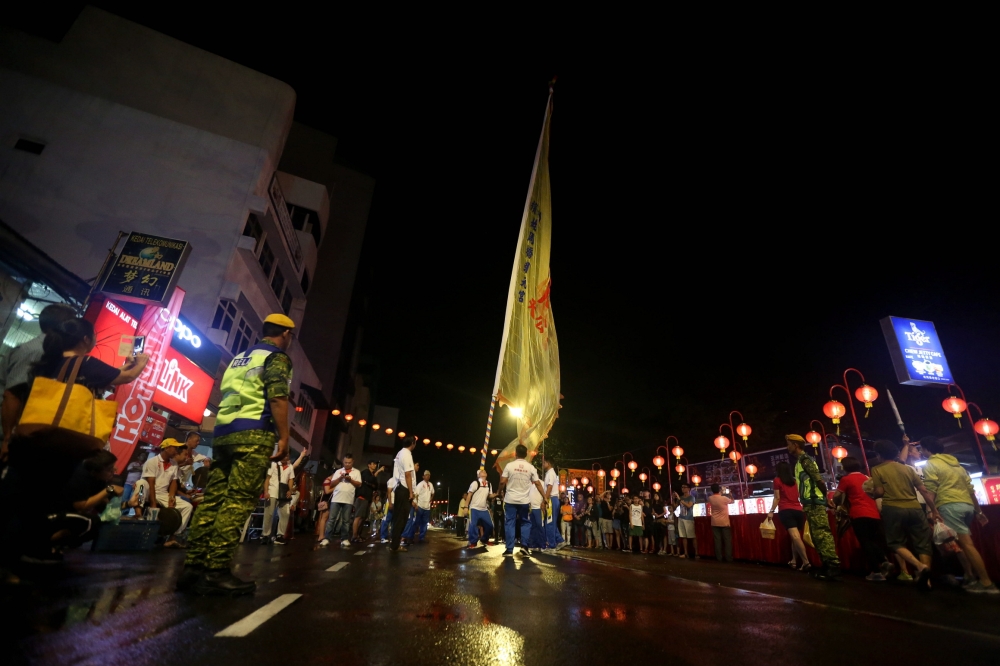GEORGE TOWN, April 6 — There was tension in the air as a Chingay performer paused with a giant flag towering above him, the bamboo pole held between his hands.
In a smooth motion, he flipped it high into the air, slid onto his back on the ground and used his foot to kick the flagpole to a performer standing on a bench behind him, who then caught it with his mouth.
Applause rippled through the crowd, but the performers were not done. They continued balancing the 10-metre-high flag while performing various acrobatic feats using their foreheads and mouths.
This acrobatic performance, unique to Penang and sometimes referred to as the “tua khi” (giant flag) performance, has long been synonymous with Chingay processions in the state, so much so that the sport itself is referred to as “Chingay”.
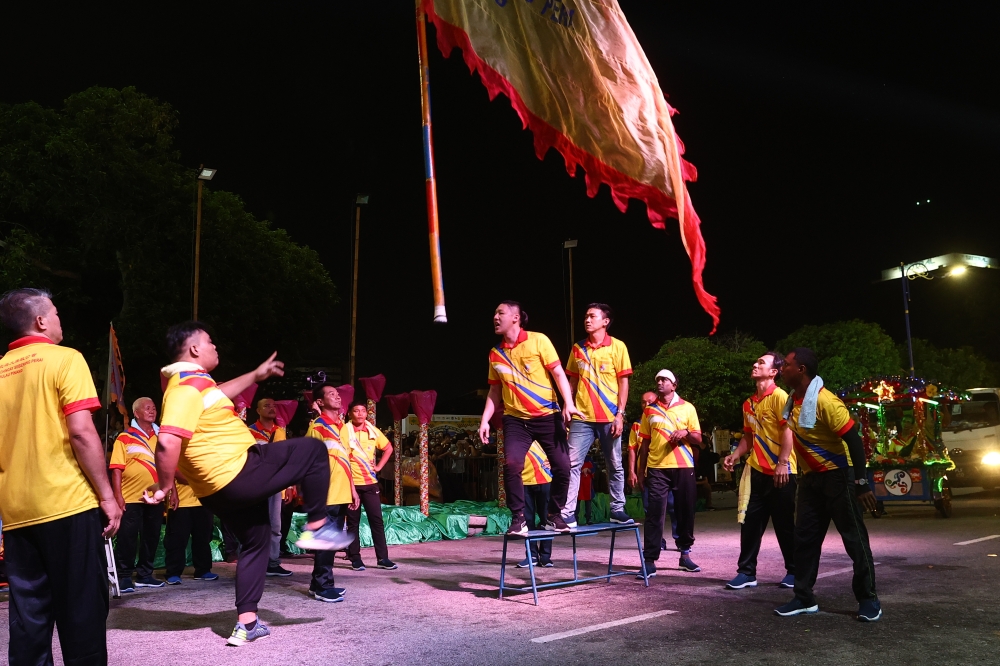
Penang Chingay acrobatics involved flipping the flag to another performer who will catch it with his mouth.
Chingay processions are believed to have been brought to Penang in the 19th century by Chinese immigrants.
They started as a religious festival in honour of Chinese deities, specifically Guanyin, the Goddess of Mercy (known as Kuan Yin in Hokkien) and Tua Pek Kong, also referred to as the God of Prosperity in Malaysia, Singapore and parts of Indonesia.
According to Penang Chingay Association secretary Andrew Lai, the word ‘chingay’ is believed to originate from the Hokkien phrase ‘ching ay’, meaning ‘very skilled’.
He said the phrase was in reference to the skills showcased by Chingay performers, particularly in the balancing of the long bamboo poles affixed with silk flags.
However, some believe the word could be derived from the Hokkien phrase ‘chin yi’ or the Mandarin ‘zhēn yì’, meaning ‘true art’.
Lai said the first recorded Chingay procession is believed to have been held in Penang in 1824 in honour of Kuan Yin and Tua Pek Kong.
An article in The Straits Times (ST) dated September 19, 1883, under Penang news, Chingay was also mentioned as “The Great Chingay or Thanksgiving Procession” in honour of Tua Pek Kong.
It was reported that more than $25,000 Spanish dollars was spent on the procession, which was attended by “an influx of Chinese from the whole of the Straits as well as Burma and Sumatra”.
According to Lai, Chingay was held annually as a religious occasion in honour of Tua Pek Kong and Kuan Yin during Chinese New Year for several decades before it slowly evolved into a multicultural event.
It was also a showcase of the acrobatic abilities of the performers as they paraded through the streets, wowing the crowd with their prowess in handling the giant flags.
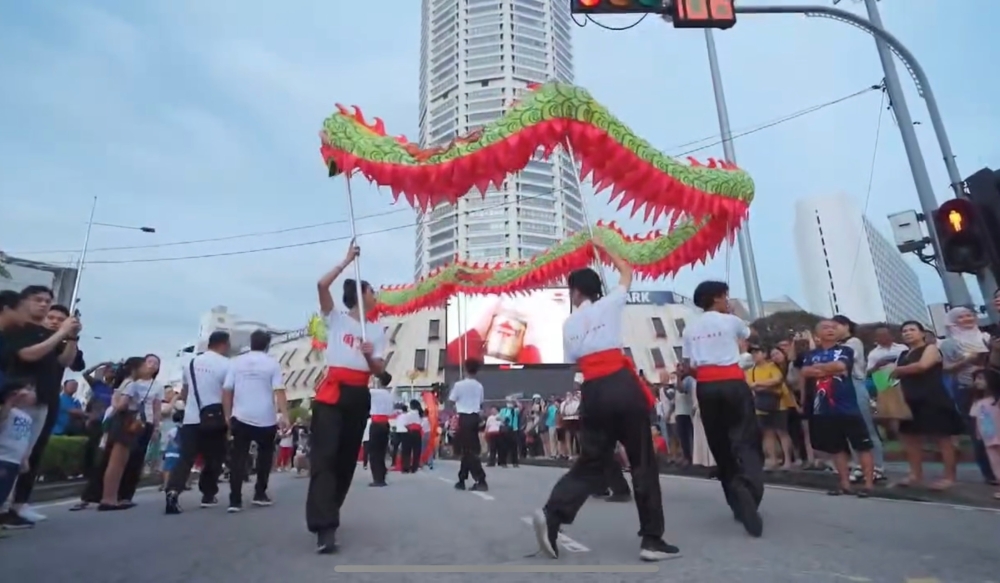
The Penang Chingay procession passing by Komtar. — Screencap taken from Penang state government’s video
News reports in the 1880s up to the 1930s described the Chingay parades as grand affairs that included decorated cars with musicians, girls dressed in elaborate costumes placed on raised platforms and a “large number of artificial birds and animals, including a dragon about 50 feet long”.
An ST report in 1919 referred to it as the ‘Chingay pageant’ and a festival of the Goddess of Mercy, with the parade passing through 40 streets.
A Penang Chingay Liaison Committee was formed in 1960 and soon after, the Penang Chingay Association was established.
By the 1970s, the Chingay parade had evolved from a religious procession into a multicultural event, especially after becoming part of the programme in Pesta Pulau Pinang that was held in December.
Besides giant flag acrobatics and decorated floats, the parade began incorporating other performances such as lion dance, silambam, boria and silat.
It soon became a tradition for the Penang Chingay parade to be held in late December.
Previously, it took place on the morning of December 25 each year, meandering through the streets of George Town.
However, in recent years, the event has been rescheduled to the last two weeks of December. For instance, the 2024 parade took place on December 28, featuring over 40 teams and various cultural performances.
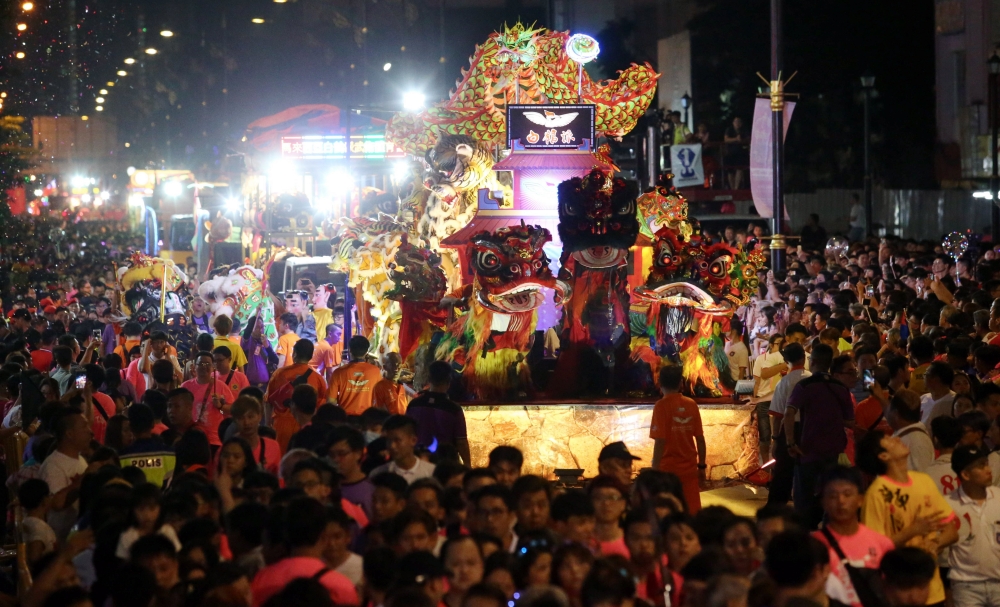
People watch the 2018 Chingay Parade Festival at Jalan Wong Ah Fook in Johor Baru March 8, 2018. — Bernama pic
Chingay beyond Penang
Other than Penang, Chingay processions were also held in Johor Baru, Alor Setar and Ipoh. In the early 1920s, it was also held in Kuching.
A 1928 ST article reported that a Chingay procession was held in Kuching every 12 years, drawing both locals and the European community as spectators.
The Chingay festival in Johor Baru spans five days, from the 18th to the 22nd day of Chinese New Year each year.
The first two days are usually for parade preparations. On the third day, a procession carries five deities from the Johor Ancient Temple in Jalan Trus to the Xing Gong Temple at Jalan Ulu Air Molek.
The five deities each represent the different sub-ethnic groups of Hainanese, Cantonese, Hakka, Hokkien and Teochew.
On the fourth day, the five deities will be paraded on palanquins held by devotees along an 8km route around the city to offer blessings to devotees.
Finally, the deities will be brought back to the Johor Ancient Temple on the fifth day.
In Ipoh, the Chingay procession is usually held on Chap Goh Meh, the 15th day of Chinese New Year, but on a smaller scale compared to those in Penang, Johor and Singapore.
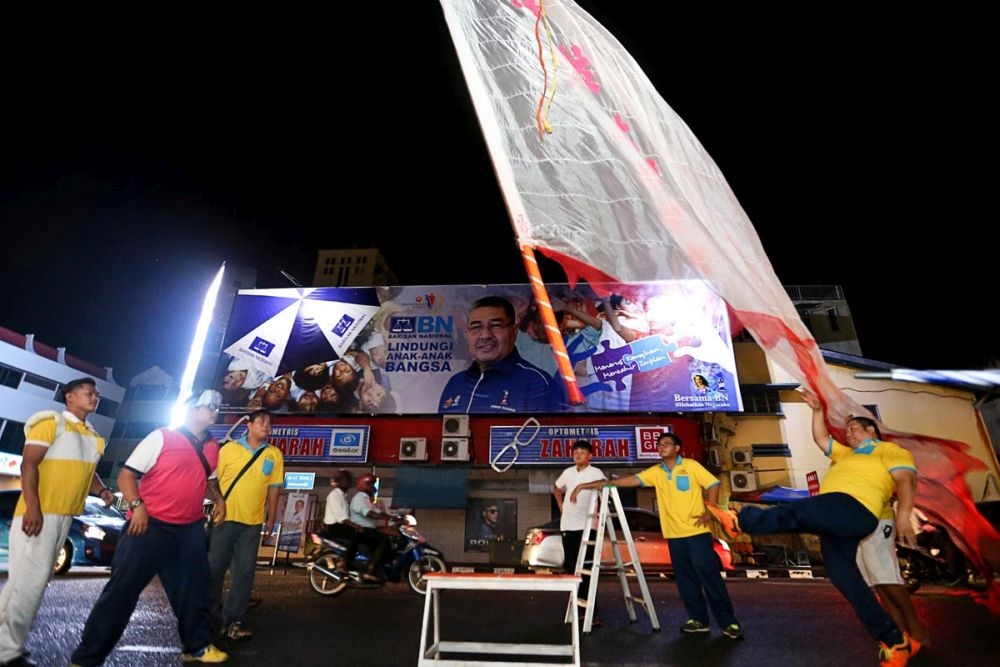
Members of the Kedah Chinese Association perform the Chingay in Alor Setar May 3, 2018. — Picture by Sayuti Zainudin
In Kedah, the Chingay procession is usually held on the 9th day of the ninth lunar month and it was also held on a much smaller scale.
Chingay was given national heritage status by the Malaysian government in 2012 under the intangible heritage category.
Under the listing, the Chingay parade in Johor Baru and Penang were both mentioned.
It stated that while Chingay began as a religious celebration, it has since evolved into a multicultural festival inclusive of other ethnicities.
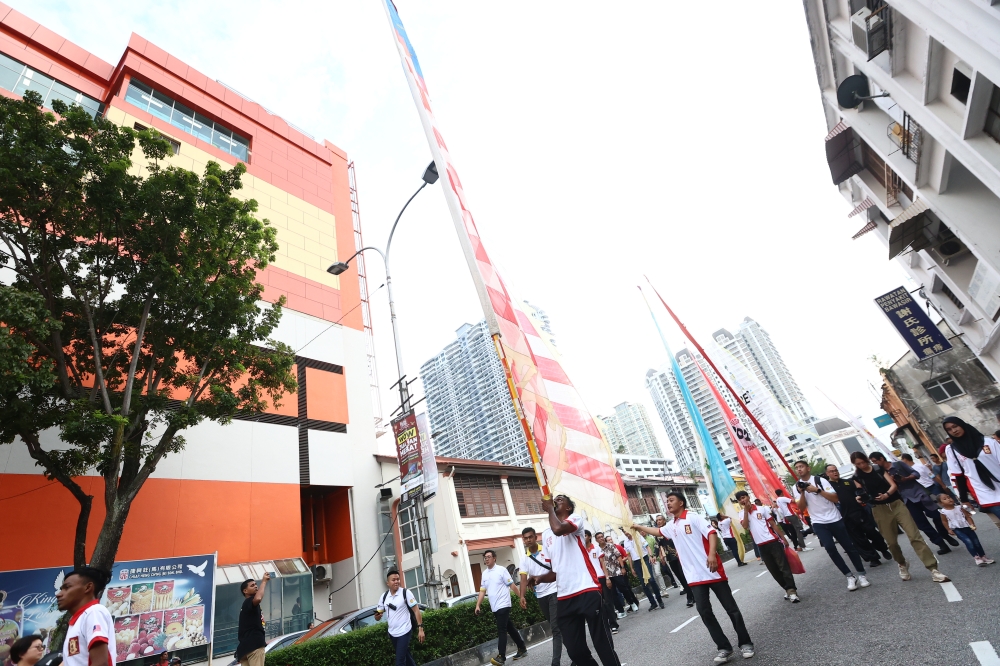
A Chingay performance during an event recently.
Chingay in Singapore
Based on newspaper articles from the 1840s to the 1900s, Chingay processions featuring colourful floats of children and performers dressed in costumes were also held in Singapore.
The first mention of a procession in Singapore appeared in The Singapore Free Press in 1840, where it was referred to as a ‘Chinese procession’ held in honour of the deity Ma Chor Po. It featured colourful banners and little girls dressed in costumes, carried on ornamented platforms.
Chingay was an annual event in Singapore in the late 19th century until it was abolished in 1906 for being deemed too extravagant and a “culturally backward practice”.
Chingay was reintroduced in Singapore by then prime minister Lee Kuan Yew in 1973, where over 2,000 performers participated.
The first Chingay procession, which started from Victoria School in Jalan Besar and ended at Outram Park, featured clowns with oversized heads, lion dances, jugglers, stilt-walkers and giant flags similar to those in Penang.
It continued annually before moving to the Orchard Road shopping belt in 1985, where it remained for 15 years.
Today, Chingay in Singapore is an extravaganza that showcases a myriad of local and international performances.
Malaysia and Singapore are preparing a joint nomination to have Chingay recognised on the Unesco intangible cultural heritage list.
The joint nomination is expected to be submitted this month.

